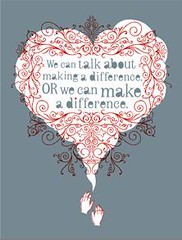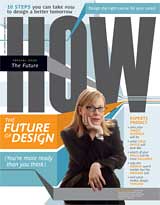Commentary: Seeing and Knowing
I call these “unseen things.” I have selected this term primarily because after the initial thrill of learning something new, or simply becoming aware of something for the first time, I find that those very same things have actually been surrounding me for years. I just never noticed them before. Yet they were there.
One of the great ironies in this relentlessly visual culture we live in is that so few people know how to see, or at least how to see beyond what is viewed in prearranged form: through a car window, an iPod or a television screen. Why is that? How have we become a culture of un-seer’s?
John Stilgoe is a popular Harvard professor and author of several books, including one of my favorites, Outside Lies Magic: Regaining History and Awareness in Everyday Places. He believes that the power of acute observation is one of nature's most useful tools in learning. Stilgoe tries to teach "another way of knowing" beyond words and numbers. Essentially he believes that people are so focused on a goal or zeroing in on what appears to be obvious that they miss what is right in front of them. Rather than not being able to see the forest for the trees, they are unable to see the trees for the forest. Stilgoe attributes this to the "constant blur of modern life."
I think there are several reasons for our collective inability to see the unseen. The first and more obvious explanation is we are surrounded by a world of activity and events that can’t be seen. The intricate forms and patterns produced by the splash of a raindrop or the volley of a tennis ball occur too quickly for our eyes to catch. But the other more complicated—and compelling--rationale is that we only choose to see the things we know and can understand and relate to. It is this basic comfort zone that curtails exposure to new experiences, or discovering what we don’t know that we don’t know.
In our day-to-day usage, objectivity is the capacity to see things as they are. In our culture, we strive for objectivity, i.e. what is true and fair and clear. There is an emphasis on seeing things that can be reliably correlated with observable reality, to the extent possible.
But what about our claims on what we might believe are objective and true but can’t be reliably correlated?
Seeing the unseen involves approaching a view of the world from multiple angles, multiple points of view, subjectively.
I can understand why more of us don’t strive for subjectivity, even the dictionary definition treats it like a mean stepsister: the modern definition of subjective is, get this: “Moodily introspective,” or “Existing only in the mind; illusory.”
I think that subjectivity is the search for the unseen. It is a quest for the unrecorded point of view, for the supposed bad idea in the back of your head, for the unproven, the un-validated, the non-quantified. It is only when we reach for these ideas that we have even the slightest possibility of ever possibly knowing what we don’t know that we don’t know.
In the grand scheme of things, I think that the poet Rainer Maria Rilke says it better than I ever could: “Have patience with everything unresolved in your heart, and try to love the questions themselves, as if they were locked rooms or books written in a very foreign language. Don't search for the answers, which could not be given to you now, because you would not be able to live them. And the point is, to live everything. Live the questions now. Perhaps then, someday far in the future, you will gradually, without even noticing it, live your way into the answer.”

















